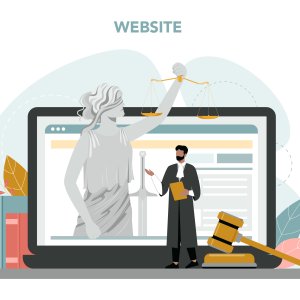The Metaverse and Its Risks

STORY INLINE POST
Let's start first by defining what the metaverse is? The term originated 30 years ago in author Neal Stephenson’s book Snow Crash and has since come to mean a digital world that encompasses everything and exists in parallel to the real world. However, the term “metaverse” gained relevance last year when Mark Zuckerberg, CEO of Facebook, changed the name of the company to Meta and announced that, in addition to artificial intelligence, the priority will now be the metaverse.
Let us understand the metaverse as a graphically-rich virtual space, with a certain degree of verisimilitude to the real world, where people can work, play, buy and socialize; in short, doing the things that humans like to do together in real life or, perhaps more to the point, on the internet.
We can think of the metaverse as the next evolution of the internet, in which users are immersed and virtually present because it consists of several key features, including real-time persistence with no latencies, full economies of buying and selling digital goods, communities, digital avatars and accessibility across multiple devices. If the concept is successful, it is expected to generate trillions of dollars in opportunities for spin-off companies across various topics, including social media, video games, e-commerce and blockchain.
So far, Facebook/Meta is the company most associated with the metaverse but Apple, Disney, Microsoft, Google, Roblox, Snap, Niantic and dozens of other tech companies are already making investments and developments.
The main points of the metaverse are:
• Real-time 3D graphics and custom avatars
• A variety of person-to-person social interactions that are less competitive and goal-oriented than stereotypical games
• Support for users creating their own virtual items and environments
• Links with external economic systems so that people can benefit from virtual goods
• Multimillion-dollar investments by technology companies seeking to obtain massive returns for being innovative in this new universe
However, what are the dangers of the metaverse?
Hacking headphones and microphones:Hackers will have all the power to save or modify what circulates through these devices. It remains to be seen what other devices will give access to the metaverse: if entry will only be possible with certain gadgets, such as glasses, gloves or joysticks, and, above all, if specific configurations will be necessary for this connection to occur.
Theft of biometric data:The metaverse will require data to identify users, who are the "owners" of the avatar and responsible for the interactions, purchase or sale of digital assets within the metaverse. To achieve this, a fingerprint, facial or retina scan will be required. The problem is that this data, while being shared in the metaverse, has the potential risk of being stolen or altered and allowing identity theft to commit fraud.
Behavioral data/social engineering:It will now be possible to record the voice, tone and facial expression of the avatar, the way in which it “walks,” the location, etc., and all this "profile" information within the platform will be even more detailed. Therefore, the risk of "knowing" the people who use it increases, allowing the generation of duplicates.
Compromised privacy: There will be nothing we can hide from computers (except our thoughts) and we will have to be very careful what we say or do online, under penalty of being publicly outed or penalized.
Personal, financial, emotional data:These are just some of the billions of data that the metaverse will contain, which, together with the absence of laws, will imply significant risks for confidentiality, intellectual property, security, privacy, etc., for example, through the use of deep fakes, avatar hacking, etc.
Digital Consent:There are no laws or legal jurisdiction in the metaverse, just as there are no physical boundaries or borders. For the same reason, there is no responsibility for actions taken, although there is an advanced path regarding the regulation of social networks.
Violence/doxing:Harassment, hate speech and the like can be harmfully enhanced by the highly realistic and immersive nature of the environment. Vulnerabilities are related to the creation of false avatars or profiles to carry out activities such as harassment or doxing – acquiring personal information to affect people in the real world. Both possibilities violate human rights.
Information exchange and malware:It is possible that different types of interactions are possible within an immersive environment, so in addition to the interaction of walking and talking with other people, it is possible to send and receive files of different types, such as images, videos or documents. It may even be possible to transfer resources directly between people and these are points that can bring a series of headaches to users if they are not managed correctly. How will it be validated if the file has malicious content? How will the platform allow you to interact with these eventual files? Will they be opened by the interface itself or will they need to be downloaded and handled separately?
Fake news: Facebook, in particular, has had a problem with fake news and specifically with the 2020 US election. It was very determined about who could post what. Since a metaverse will be an expansion of social sites like Facebook, it is important to understand how misinformation can spread in a metaverse.
Regulatory loopholes:There are also risks to earnings regulations and taxes. As many current metaverse businesses such as online games make their profits in cryptocurrencies, regulations need to be in place to address issues with this currency and revenue streams. Most global governments have yet to modernize their legal infrastructure to deal with a future metaverse and they need to do so soon.
Hoaxes:If not properly regulated, the metaverse can act as a "no man's land" to be exploited by criminals. Security experts from tech company Cisco have identified scams and attacks that can be carried out in virtual environments to steal amounts of money, cryptocurrencies and personal data from users.
NFT theft:Criminals, however, have found ways to exploit this type of arrangement so that the victim pays and does not receive the product, usually an NFT.
Pollution:Bitcoin mining consumes more electricity than 159 countries at 121.36 terawatt hours per year, which is more than what Google, Apple, Facebook and Microsoft consume together. Facebook is one of the most used social networks in the world. It is estimated that Facebook emits 980,000 tons of CO2 annually, taking into account all its functionalities. Will green cryptocurrencies be possible? Will it be possible to have a sustainable metaverse that fights for decarbonization and is fair to society?
Mental and physical health:Because these are new technologies, there are no long-term studies on their physical and mental impacts. Although side effects vary from person to person, immersive gaming can lead to depression, isolation, loneliness and even suicide and violence.
As the WHO warns, digital formats can “effectively disguise” advertisements for tobacco products, unhealthy foods or alcoholic beverages as user-generated messages, memes, news articles or entertainment formats.
On the other hand, the disappearance of the perception of danger associated with certain actions or attitudes may be another consequence of this metaverse. Crashing a vehicle in the virtual universe, falling from a burning building or being shot, have no major consequences, at least in terms of the physical survival of its users.
Espionage and black campaigns:According to experts, this absolute submission in the digital world could promote disinformation, espionage and surveillance campaigns.
Words of conclusion: the metaverse will not be good or bad. It will depend on the purpose human beings give the technology, as was the case for atomic energy.








 By Fernando Thompson | Founder & Chief Innovation Officer -
Mon, 08/08/2022 - 09:00
By Fernando Thompson | Founder & Chief Innovation Officer -
Mon, 08/08/2022 - 09:00
















